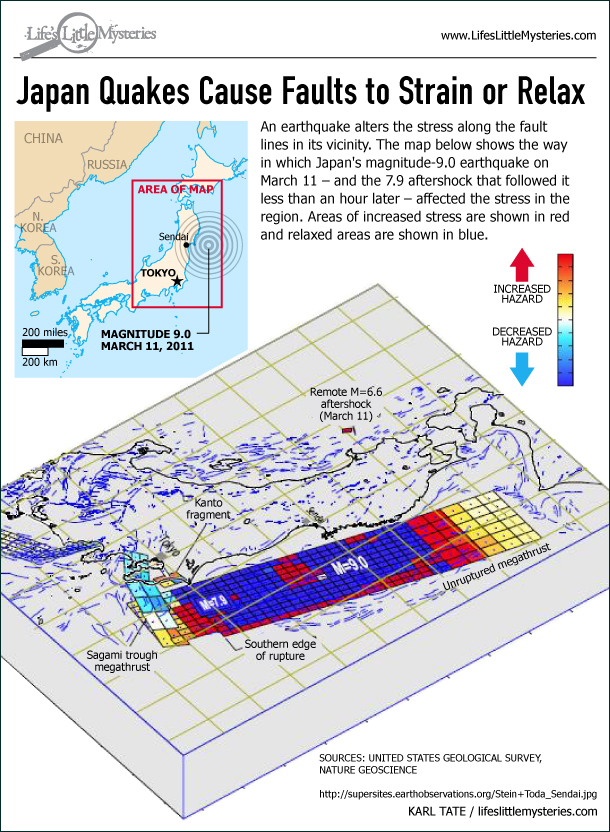Infographic: How the Japan Quake Triggered Aftershocks

A 7.1-magnitude earthquake struck off the coast of Japan today (April 7) just 21 miles (34 km) from the epicenter of the massive 9.0 one that struck on March 11.
Aftershocks are caused by stress changes in the faults near a large earthquake. "When an earthquake happens, it changes the stress in the vicinity around it, and if there are other faults nearby, this increase in stress can trigger them and produce more earthquakes. In other places, it relaxes the crust and puts earthquakes off," U.S. Geological Survey earthquake geologist David Schwartz told Life's Little Mysteries.
Here's how the March 11 quake and first aftershock changed the stress level in the region.
- When Will the Aftershocks In Japan End?
- Japan's Explosive Geology Explained
- Bogus Claim: Japan Earthquake Won't Trigger California Quake
{loadposition article-text-left-ad}
Get the world’s most fascinating discoveries delivered straight to your inbox.



